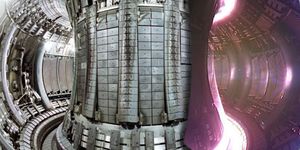Innovative AI Technology Aims To Protect Water Supplies
Recent artificial intelligence (AI) technology could be a breakthrough for water supply protection ultimately advancing public health. At the University of Waterloo, scientists have developed new AI software that can identify and quantify different kinds of cyanobacteria or blue-green algae. These living organisms, when proliferating, can be a major threat to shut down water systems.
Watch Video Below To Understand What Makes Blue-Green Algae Dangerous:
"We need to protect our water supplies," explains Monica Emelko, a professor of civil and environmental engineering and member of the Water Institute at Waterloo. "This tool will arm us with a sentinel system, a more rapid indication when they are threatened. The exciting piece is that we've shown testing utilizing AI can be done quickly and well. Now it's time to work through all the possible scenarios and optimize the technology."
The AI technology is an operational system that will inexpensively combine a software program and a microscope to automatically analyze water samples in roughly two to three hours. The water analysis will consist of searching for algae cell content with the results confirmed by a human analyst. According to Emelko and systems design engineering professor at Waterloo, Alexander Wong, the AI technology will work as a cautionary system that provides early warning of issues; this is particularly efficient since analysis will be complete in a frequent manner.
Present methods of water analysis include shipping samples to labs for manual testing by technicians which usually takes one to two business days. Although some automated systems have already been developed to relieve manual labor, these require expensive equipment and supplies. Now, the goal of the innovative AI system is to continuously use a microscope to monitor the flow of water and detect contamination and the presence of microorganisms. "This brings our research into a high-impact area," said Wong. "Helping to ensure safe water through widespread deployment of this technology would be one of the great ways to really make AI count."
Researchers say it will take a little while, about two to three years, for full construction of a refined full commercial sample testing system to be used in labs and even in-house at treatment plants. The technology will continuously provide monitoring for up to three to four years away. "It's critical to have running water, even if we have to boil it, for basic hygiene," said Monica Emelko, a professor of civil and environmental engineering at Waterloo. "If you don't have running water, people start to get sick."
Source: University of Waterloo, Science Daily








